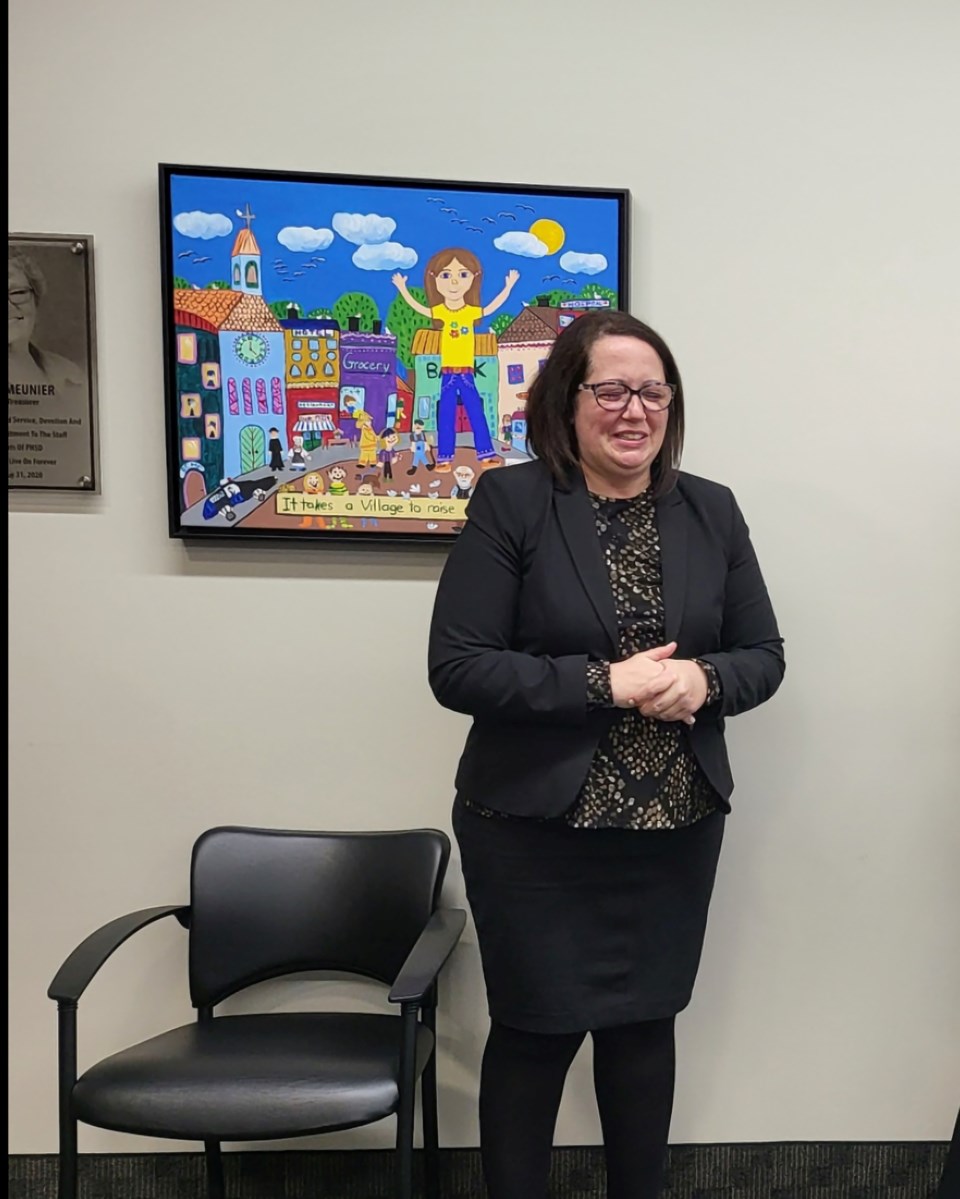BARRHEAD - The Pembina Hills School Division is staying the course on its educational priorities for the next three years.
Raime Drake, deputy superintendent of education services, delivered the 2024-2027 Educational Plan to trustees at the May 22 board meeting, where Drake said the schools will continue to focus on student-staff relationships, literacy and numeracy and supporting staff.
“These are the highlights I wanted to share,” stated Raime.
“We have been planning for many months. It’s an ongoing process. Progress doesn’t happen in just a year.”
Satisfaction surveys, Alberta Education surveys, principals’ information, and teaching inputs are all taken into consideration to develop the plan, according to Drake.
“We are committed to elements that we include in the annual education plan are our mandate, our purpose, our motto and our value statements. These were approved by the board in March," Drake explained.
Drake presented the other required components of the annual review of the educational plan must include, including the division profile, the stakeholder Engagement and the capital plan and budget.
The division profile encompasses the overview of schools, enrolment, and geographic locations.
The stakeholder agreement is reported on and includes community, parents, staff, students, and school councils.
There is a school council statement included in the education plan.
The capital plan and budget details the Barrhead Composite High School modernization project and the overview of the 2024-2025 budget.
The Plan is submitted to Alberta Education, and they check and make sure that all of the requirements have been included, according to Drake.
The priorities have not changed from last year, only a few adjustments were made through progress monitoring, Drake told the Board.
The first priority is student-staff relationships, being the foundation upon which we build students’ resilience, confidence and mental well-being, Drake said.
“Last year was our first full year where we saw our 4.4 student and family advocates (SFA),” Drake said.
There were two development events with staff in September and February focusing on mental health.
Drake shared that they really saw the importance of having successful transitions for our students, from grade to grade and from school and beyond.
For the 2024-2025 plan there is an educational services agreement with Rupertsland Centre.
Over half of the students who identify as First Nations, Métis or Inuit identify as Métis.
“We also know that many of them (students) do not self-identify, and some tell us the choose not to self-identify because they do not see themselves in our schools,” Drake identified.
This points to belonging and building relationships with students, families and communities’ partnerships.
Rupertsland is going to help with addressing these focuses.
Actions have been taken to have more team members have a shared understanding and strengthen those bonds because everyone has a key part to play.
Through these professional development sessions, staff has listened to Dr. David Tranter, a social worker from Thunder Bay.
“His message is that it is traditionally thought academics is one path and mental health is a second path, as silos,” said Drake.
“We need to go at this together and it is not a single program or boxed resource that is going to fix our mental health problem with our students, our families and our staff.”
Staff will be empowered to support mental health through different activities, highlighting the important of interactions and bringing academics and mental health actions together.
Principals are using collaborative team meetings to review data, reading scores, math scores, and writing samples is happening more often.
Then teachers can take that information and try different instructional strategies to impact more success.
There is a new training space outside of the Outreach area.
The second priority is literacy and numeracy, and strategies are not changing.
“We are making good progress,” Drake said.
“With the introduction of the data walls in the second part of this year and teachers are getting excited.”
Teachers are seeing the results of their efforts, celebrating that, and are making significant changes in their classrooms.
The third priority is support for staff, and it is gaining momentum with inclusive training and principals in classrooms more often.
The school board has been out at schools doing learning walks and Drake partakes in her own learning walks.
There are visible learning intentions, success criteria, a new curriculum, new science sections, and an increase in student-created materials on the walls.
There is a more refined approach to this strategy and there is progress being made.
Combined IELT (International English Language Testing)/Admin Learning and Work is one of the strategies within this priority.
This was the first year for Mr. Decision being IELT for Busby, Dunstable and Fort Assiniboine, taking the responsibility off the administrators.
This allows for collaborative work and distributed leadership and the result is growth.



